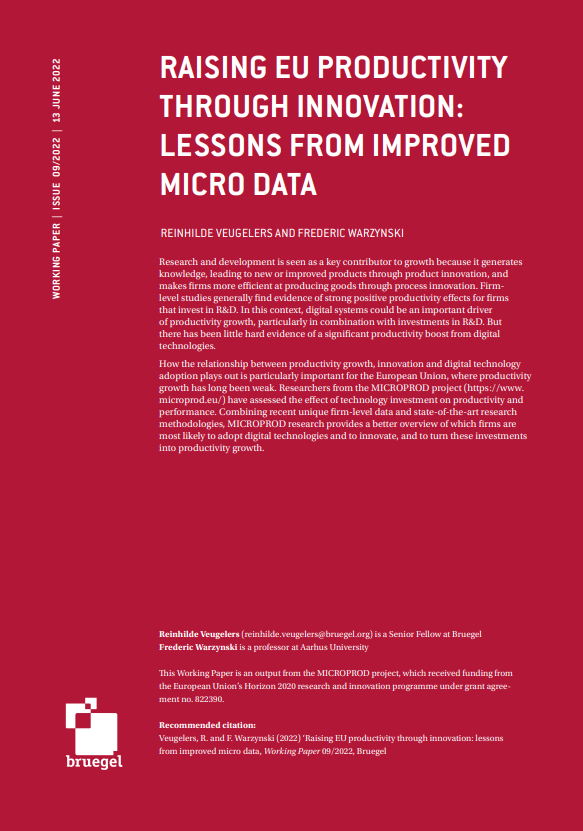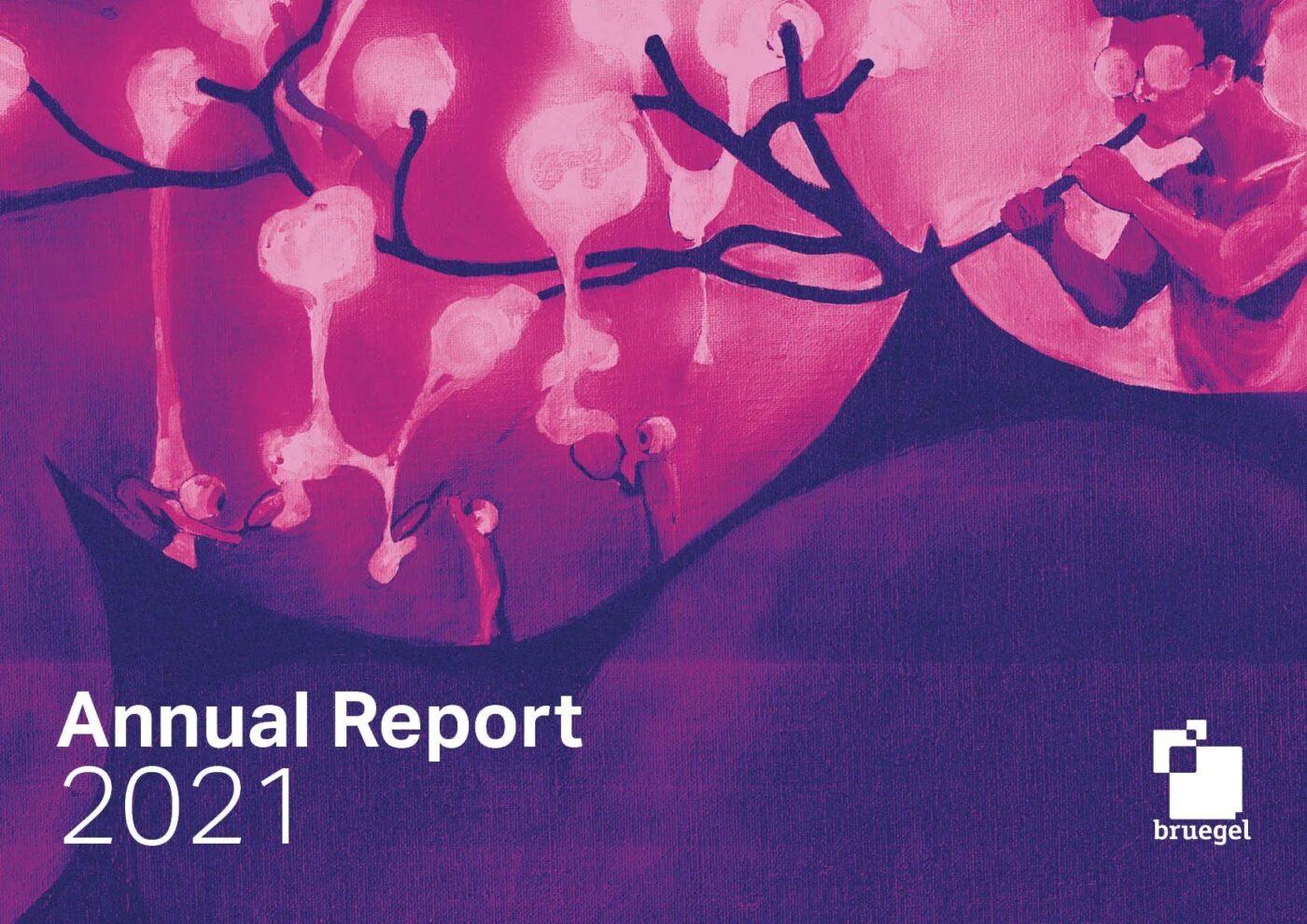Blog Post
Triggering competitiveness: A ‘decalogue’ from new firm-level evidence
Competitiveness is one of the most debated issues in policy circles. But, what triggers it? Capitalising on the first existing harmonised cross-country dataset measuring the entire range of international activities of firms in seven European countries, this column identifies the triggers of competitiveness. It argues that policymaking could be improved by firm-level evidence if there were less reluctance to the use of micro-founded indicators to inform policy decisions.
A version of this column was published in VOX
Competitiveness is one of the most debated issues in policy circles. But, what triggers it? Capitalising on the first existing harmonised cross-country dataset measuring the entire range of international activities of firms in seven European countries, this column identifies the triggers of competitiveness. It argues that policymaking could be improved by firm-level evidence if there were less reluctance to the use of micro-founded indicators to inform policy decisions.
The ability to ‘grow out’ of the crisis is now widely recognised as the only viable long-term option for maintaining the Eurozone (Delbecque 2012), keeping the EU vibrant and assuring the sustainability of the European social-market-economy model. Enhanced ‘competitiveness’ at the EU level is required, which would allow the EU to capture growth currently taking place mainly in emerging markets.1
In our paper (Altomonte et al. 2012), we focus on a specific dimension of competitiveness, that is external or international competitiveness, defined as the ability to exchange the goods (and services) in which a country is abundant for the goods and services that in the same country are scarce. The latter turns out to be intimately related to the productivity of firms operating in a given country. Exploiting the first existing harmonised cross-country dataset measuring the entire range of international activities of firms in seven European countries (EFIGE), we discuss the limits of some competitiveness’ measures (e.g. unit labour costs) which are widely used in policy contexts. Moreover, we are able to identify a set of features which make firms internationally competitive. The dataset combines measures of firms’ international activities with balance-sheet figures (from Amadeus, Bureau van Dijk) as well as quantitative and qualitative information on around 150 items ranging from R&D and innovation, labour organisation, financing and organisational activities, and pricing behaviour. Data consists of a representative sample (at the country level for the manufacturing industry) of almost 15,000 surveyed firms in seven European economies; roughly 3000 for Germany, France, Italy and Spain, slightly more than 2000 for the UK and approximately 500 for Hungary and Austria. The wealth of these data allows us to come up with several policy-relevant results.
Main results
Firms in our (representative) sample are very heterogeneous across and within countries and industries (hence, describing them in terms of the characteristics of the ‘average firm’ is of little practical use) and exhibit a clear rank in terms of internationalisation strategies. Indeed, after controlling for country and industry characteristics, international exposure is positively correlated with total factor productivity and labour productivity at firm level. Moreover, in line with economic theory, total factor productivity and labour productivity are also positively correlated with the complexity of firms’ internationalisation activities, with complex activities (e.g. FDI) more strongly associated with higher productivity than simpler activities (e.g. imports or exports). Outsourcing, which typically involves an intermediate level of complexity, is associated with the middle of the productivity range. Such a correlation, however, holds to a lesser extent when productivity is measured in terms of (the inverse of) unit labour costs, thus highlighting the importance of non-price determinants of competitiveness (a finding already pointed out by Rodríguez Crespo et al (2012) in the competitiveness analysis of Spain).2
Furthermore, the EFIGE dataset also allows us to identify what makes some firms move, over time, from below to above a minimum performance threshold (or ‘productivity cut-off’) required to become active in the international environment. To identify what ‘triggers’ such a minimum level of competitiveness, we test the characteristics of firms that manage to overcome such a cut-off over time using several variables constructed from the dataset. Specifically, we partition the firms in our sample in three groups depending on their distinct internationalisation trajectories and label them accordingly. ‘Remain below’ refers to those firms whose average total factor productivity was below the relevant cut-off for internationalisation in the period 2001-2007, and that also remain below the cut-off in 2008-2009. ‘Move below’ indicates those firms that worsened their performance relatively to the identified total factor productivity cut-off. “Remain above” refers to firms that over the period 2001-2009 have always been above the TFP triggering-competitiveness threshold identified in the analysis (some 2,850 large and well capitalised firms in our sample). Finally, ‘move above’ indicates the ‘switchers’; some 940 firms that were able to overcome the critical productivity cut-off from the period 2001-2007 to the period 2008-2009.
When testing the probability of a given firm characteristic to be significantly associated to the status of ‘switcher’, we find that, irrespective of their countries of affiliation, their starting levels of productivity and their sectoral specialisation, firms that go international have a quite similar set ‘growth friendly’ characteristics related to:
- Innovation (human capital and R&D intensity).
- Finance (adequate capital in the form of equity).
- Human resources and management (the use of performance-based salaries and a reduced presence of managers belonging to the family, if the firm is family owned).
- Ownership structures (affiliation to a foreign group).
Firms with the right balance of these characteristics are able to grow and become successful internationally. In so doing, they become larger than the average domestic firm (140 versus 31 employees in our sample). Firms that do not strike that balance remain small and domestic, thus not contributing to their country’s external competitiveness.
Policy conclusions
From a policymaking perspective, these findings have several implications:
- If the objective of policy is to foster a country’s ‘competitiveness’, the ultimately firm-driven nature of this process is such that aggregate measures of competitiveness are subject to a number of biases that have to be appropriately taken into account when interpreting aggregate statistics. There is no ‘average’ firm, rather, firms are very heterogeneous within countries and industries.
- Successful international companies invest in human capital and R&D, rely on equity finance, motivate their human resources through performance-based incentives, do not necessarily loathe family ownership but do draw a line between the family owner and the firm’s management, and do not see foreign capital as an intrusion but rather thrive on the synergies it creates and the international opportunities it opens up, via both imports and exports, and in general via the participation in global value chains.
- Small is not beautiful per se. It is true that a significant part of employment and productivity growth comes from small firms. However, these are not any small firms. They are firms that start small and, in the process of getting bigger, become more productive and start to hire more employees. In this respect, the key question for policy aimed at small and medium companies should not be how to help small firms to survive as they are, but should rather be how to help small firms adopt the right attributes that promote not only survival but also growth.
- Specific incentives (both market- and government-based) should be created in the areas of innovation (e.g. tax credit schemes for R&D expenditures), finance (e.g. via the liberalisation and simplification of a cross-border pan-European market for private equity and venture capital), human resources (e.g. promoting lifelong training programmes and securing an improvement in national education systems), management (e.g. via a better link between wages and productivity), and ownership (fostering the attraction of foreign investment and the participation of domestic firms in global value chains).
- There is no need for specific incentives in the area of internationalisation (with the possible exception of providing better information on foreign opportunities), as more productive firms (i.e. those firms acquiring the above characteristics and thus overcoming the critical productivity cut-off) become quite naturally international, while the opposite is not necessarily true (domestic firms receiving an incentive for their internationalisation process do not necessarily become more productive).
- More generally, the promotion of productivity growth and competitiveness can and should go beyond the traditional exercise of educated guesswork, targeting instead the specific structural aspects that make firms inclined to acquire the ‘right’ set of characteristics, beyond the worn-out generic mantra of ‘flexibilities versus rigidities’. Such an approach, still popular in policy circles, is no longer justifiable in the era of firm-level data.
References
Altomonte, C., Aquilante, T. and Ottaviano G.I.P. (2012) “The Trigger of Competitiveness – The EFIGE Cross Country Report", Bruegel Blueprint Series. Volume XVII, July 2012, Brussels.
Altomonte, C, Barba Navaretti, G., Di Mauro, F. and Ottaviano, G.I.P. (2011) "Assessing competitiveness: how firm-level data can help", Bruegel Policy Contribution 2011/16, November 2011, Brussels.
Delbecque, Bernard (2012), “Saving the euro requires restoring Spain’s competitiveness”, VoxEU.org, 30 July.
Rodríguez Crespo A., Gabriel Pérez-Quirós and Rubén Segura Cayuela (2012) ‘Competitiveness indicators: the importance of an efficient allocation of resources’, Economic Bulletin (January), Banco de España.
1 On these issues see for example the activities of the Competitiveness Research Network (CompNet) set by the ECB.
2 See Altomonte et al. (2012) for a discussion on the aggregation biases which might affect unit labour costs.
Republishing and referencing
Bruegel considers itself a public good and takes no institutional standpoint. Anyone is free to republish and/or quote this post without prior consent. Please provide a full reference, clearly stating Bruegel and the relevant author as the source, and include a prominent hyperlink to the original post.








